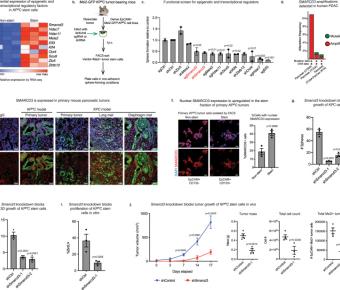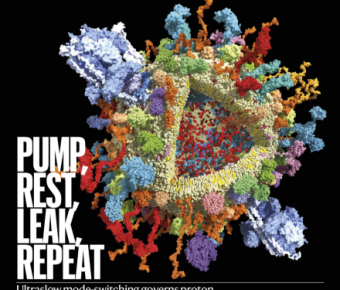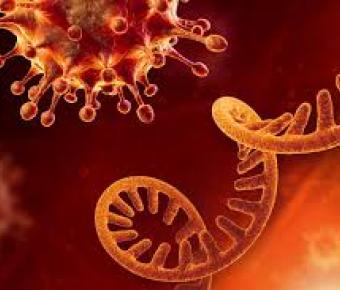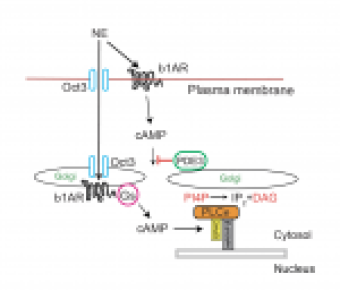Smarcd3 is an epigenetic modulator of the metabolic landscape in pancreatic ductal adenocarcinoma.
January 18, 2023
Pancreatic cancer is characterized by extensive resistance to conventional therapies, making clinical management a challenge. Here we map the epigenetic dependencies of cancer stem cells, cells that preferentially evade therapy and drive progression, and identify SWI/SNF complex member SMARCD3 as a... TP53-mediated clonal hematopoiesis confers increased risk for incident atherosclerotic disease.
January 16, 2023
Somatic mutations in blood indicative of clonal hematopoiesis of indeterminate potential (CHIP) are associated with an increased risk of hematologic malignancy, coronary artery disease, and all-cause mortality. Here we analyze the relation between CHIP status and incident peripheral artery disease... Nature – Pump, rest, leak, repeat by Dr. Michael Grabe
November 23, 2022
The cover illustration shows vacuolar-type adenosine triphosphatases (V-ATPases, large blue structures) on a synaptic vesicle from a nerve cell in the mammalian brain. V-ATPases pump protons across cellular membranes, and in neurons this process is essential for loading neurotransmitters into... Adrenergic-Thyroid Hormone Interactions Drive Postnatal Thermogenesis and Loss of Mammalian Heart Regenerative Capacity
September 20, 2021
Why can’t adult human hearts regenerate after injury like a heart attack? The Huang lab recently presented findings in Circulation to support that loss of cardiac regenerative capacity may be a tradeoff for us to be warm-blooded, and now identified the second major thermogenic pathway that is... Poison Frogs, Birds, Hold Clues to Antidotes for Deadly Toxins
August 05, 2021
A team of researchers at UC San Francisco, the California Academy of Sciences and Stanford University have uncovered some intriguing clues in the mystery of how some poison birds and frogs evade their own toxins. The answer may lead to a much-sought-after antidote to paralytic shellfish poisoning (... Binding of SARS-CoV-2 spike protein to ACE2 is disabled by thiol-based drugs; evidence from in vitro SARS-CoV-2 infection studies
December 08, 2020
Coronavirus disease 2019 (COVID-19) is caused by the severe acute respiratory syndrome coronavirus 2 (SARS-CoV-2), and the SARS-CoV-2 spike protein is an envelope glycoprotein that binds angiotensin converting enzyme 2 as an entry receptor. Cytoprotection by a naturally occurring variant of ATP5G1 in Arctic ground squirrel neural progenitor cell
October 14, 2020
In major cardiovascular diseases, including stroke and heart attack, loss of blood flow causes loss of oxygen (ischemia), leading to tissue damage and cell deaths. A species of ground squirrels from the Arctic can tolerate such ischemic attack, but the underlying biological basis has been unknown. The structure of a calsequestrin filament reveals mechanisms of familial arrhythmia
October 12, 2020
In a clinical collaboration with Melvin Scheinman from the UCSF Comprehensive Genetic Arrythmia Program, CVRI investigators Rahul Deo and Natalia Jura, along with MD/PhD trainee Erron Titus, set out to explain how mutations in the calcium-storage protein, calsequestrin, cause lethal arrhthymias.... A digital biomarker of diabetes from smartphone-based vascular signals
August 17, 2020
The global burden of diabetes is rapidly increasing, from 451 million people in 2019 to 693 million by 2045 









